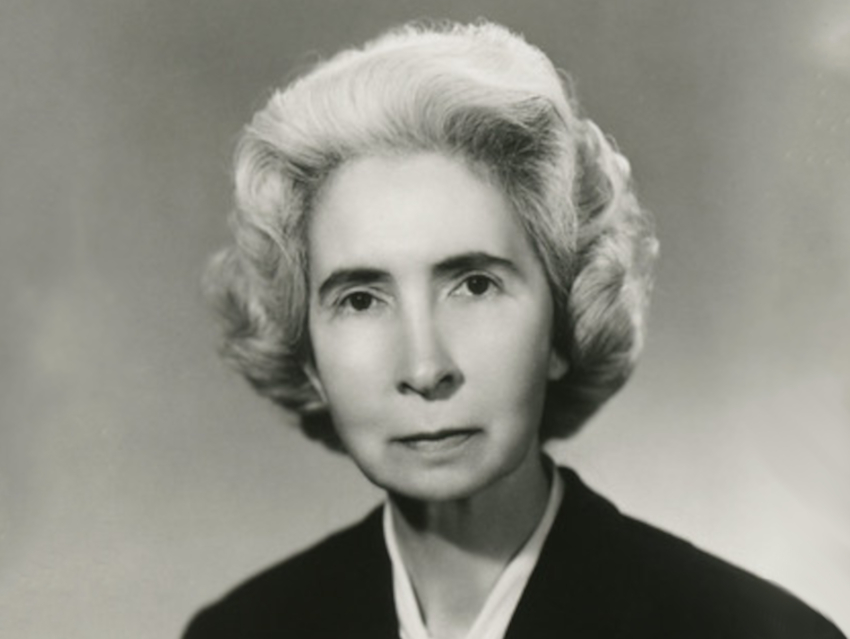Allene Rosalind Jeanes was born on July 19, 1906, in Waco, TX, USA. She studied chemistry and received a bachelor’s degree from Baylor University, Waco, in 1928 and a master’s degree from the University of California, Berkeley, USA, in 1929. Jeanes then worked as a mathematics teacher at a high school in Texas for a short time. She served as the Head of the Department of Science at Athens College in Athens, AL, USA, from 1930 to 1935, where she taught chemistry, biology, and physics.
Jeanes then attended the University of Illinois, Champaign, USA, where she received her Ph.D. in organic chemistry in 1938. Then, she served as a researcher working at the U.S. National Institutes of Health (NIH) after accepting one of the first Corn Industry Research Foundation Fellowships. Then she moved to the U.S. National Bureau of Standards, where she worked with carbohydrate researcher Horace Isbell. In 1941, she joined the U.S. Department of Agriculture’s Northern Regional Research Laboratory (NRRL) in Peoria, IL, as a chemical researcher. She worked there until her retirement. Allene Jeanes died on December 11, 1995, in Urbana, IL, USA.
Jeanes’ research focused on carbohydrates, including dextran. Dextran is a complex branched glucan—i.e., a polysaccharide made from glucose units—that is not usually found in large quantities in nature. Jeanes was able to isolate bacteria that produce dextran from samples of contaminated root beer sent to her lab at NRRL by a local soft-drink company. This led to a large-scale production process for dextran and allowed its use in a dextran-based medical product that expands blood plasma volume. This plasma substitute can be helpful in medical emergencies to keep the blood pressure up and was used, for example, in the Korean war.
To honor her work on dextran, Jeanes received the Distinguished Service Award from the U.S. Department of Agriculture in 1953. She was also awarded the Garvan Medal from the American Chemical Society (ACS) in 1956, among other honors. Jeanes also developed xanthan gum, another polysaccharide that is produced by bacteria—in this case, Xanthomonas campestris. Xanthan gum is widely used as a thickening agent in foods.
Allene Jeanes is the answer to Guess the Chemist (115).
Sources
- The Biographical Dictionary of Women in Science,
M. B. Ogilvie, J. D. Harvey,
Routledge, New York, 2000.
ISBN 0-415-92038-8 - Allene Rosalind Jeanes,
Chemical Heritage Foundation,
www.chemheritage.org. (archived version accessed July 17, 2021)
Selected Publications
- Periodate Oxidation of Dextran,
A. Jeanes, C. A. Wilham,
J. Am. Chem. Soc. 1950, 72, 2655–2657.
https://doi.org/10.1021/ja01162a086 - Dextran Triacetates,
A. Jeanes, C. A. Wilham,
J. Am. Chem. Soc. 1952, 74, 5339–5341.
https://doi.org/10.1021/ja01141a035 - Characterization and Classification of Dextrans from Ninety-six Strains of Bacteria,
A. Jeanes, W. C. Haynes, C. A. Wilham, J. C. Rankin, E. H. Melvin, Marjorie J. Austin, J. E. Cluskey, B. E. Fisher, H. M. Tsuchiya, C. E. Rist,
J. Am. Chem. Soc. 1954, 76, 5041–5052.
https://doi.org/10.1021/ja01649a011 - Heterogeneity in dextran preparations,
C. A. Wilham, B. H. Alexander, A. Jeanes,
Arch. Biochem. Biophys. 1955, 59, 61-75.
https://doi.org/10.1016/0003-9861(55)90463-X - Polysaccharide B-1459: A new hydrocolloid polyelectrolyte produced from glucose by bacterial fermentation,
A. Jeanes, J. E. Pittsley, F. R. Senti,
J. Appl. Polym. Sci. 1961, 5, 519–526.
https://doi.org/10.1002/app.1961.070051704 - Extracellular polysaccharide produced from glucose by Cryptococcus laurentii var. flavescens NRRL Y-1401: Chemical and physical characterization,
A. Jeanes, J. E. Pittsley, P. R. Watson,
J. Appl. Polym. Sci. 1964, 8, 2775–2787.
https://doi.org/10.1002/app.1964.070080623 - Extracellular polysaccharide produced from glucose by Arthrobacter viscosus NRRL B-1973: Chemical and physical characterization,
A. Jeanes, C. A. Knutson, J. E. Pittsley, P. R. Watson,
J. Appl. Polym. Sci. 1965, 9, 627–638.
https://doi.org/10.1002/app.1965.070090223 - Immunochemical and related interactions with dextrans reviewed in terms of improved structural information,
A. Jeanes,
Mol. Immunol. 1986, 23, 999–1028.
https://doi.org/10.1016/0161-5890(86)90131-8


